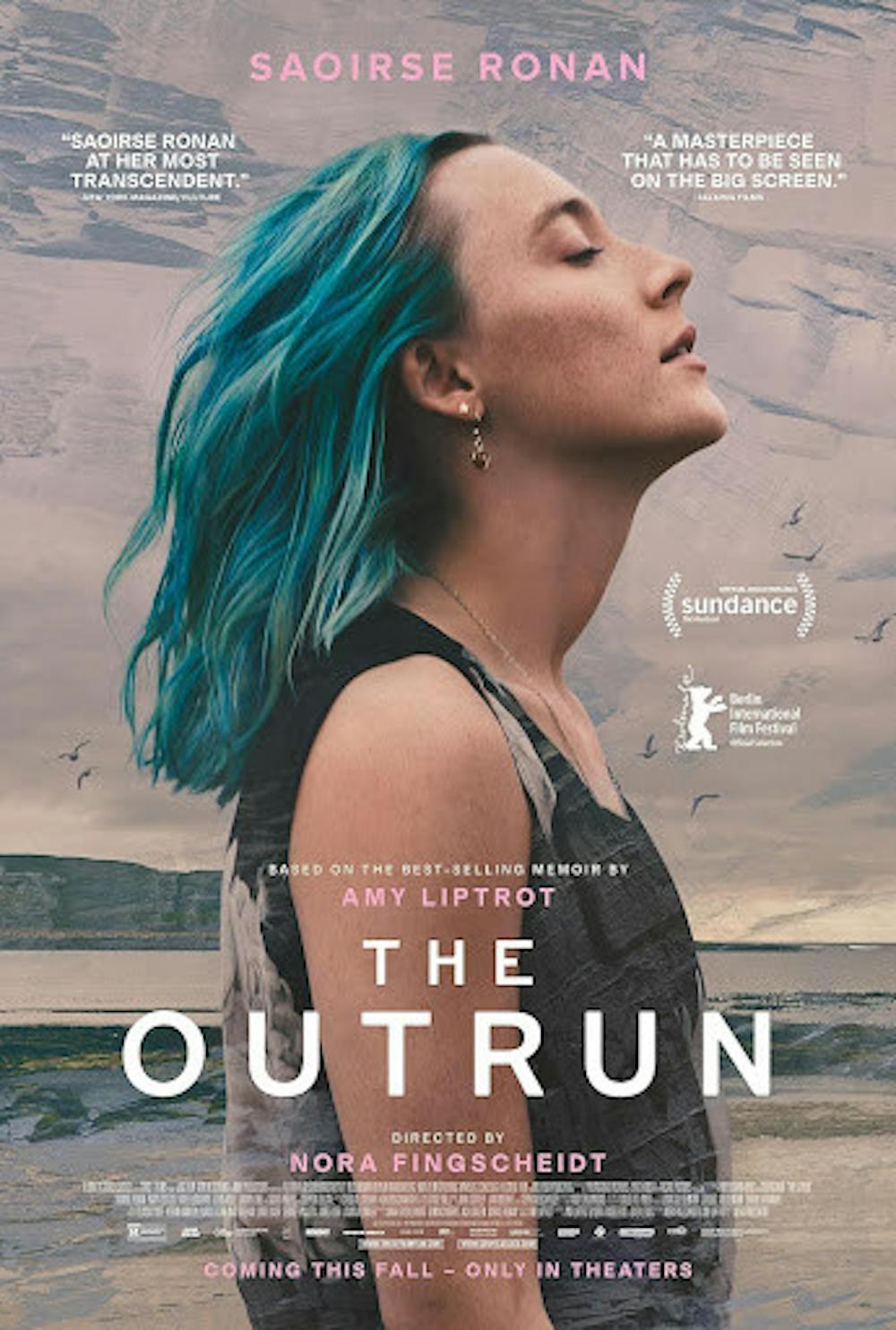By Sky Pinkett
Staff Writer
Irish actress Saoirse Ronan, who had become a fan favorite starring in major films such as 2017’s “Ladybird” and 2019’s “Little Women,” gives another powerful performance in 2023’s “The Outrun,” a film experiencing a surge of newfound attention after being recently added to Netflix.
Directed by Nora Fingscheidt and adapted from the 2016 memoir of the same name by Amy Liptrot, the movie tells the tale of a woman named Rona, played by Ronan, who has returned to her home town in the Orkney Islands to reconcile with her troubled past as well as to heal from her present problems.
The story is not told in the most linear format. We follow Rona from her wild social life in London to a quieter and solitary existence in her hometown. It is easy to follow which scenes are flashbacks, which scenes are dreams and fantasies of the main character and which scenes are moments of the present through what color Rona’s hair is dyed, as each hair color choice is indicative of a different period in her life.
As the movie description suggests, Rona is in her hometown, reckoning with issues in a serious manner. “The Outrun” gives a raw look at themes that tackle addiction, mental disorders and family trauma. It does so without any flashy camera tricks or a booming music score, preferring to focus on the natural look and sounds of the Orkney Islands and Ronan’s compelling acting.
This film feels as much of a love letter to the ecosystem and culture of the Orkney Islands as it does a serious drama on healing from trauma. Orkney is an archipelago off the northeastern shore of Scotland, and despite the challenges all of the characters in the movie experience, their love and respect for Orkney stands as a constant.
Interspersed throughout the movie are monologues from Rona about the island’s various myths and cultural traditions, coupled with wide shots of the island’s endless green fields, dark blue coastlines and gray skies. The fact that Rona possesses a passion for various fixtures of the environment helps give the movie an added environmental message.
This is a slow-paced type of film. The most flash anyone can get from it are from the strobe lights found in the flashback scenes of Rona’s partying days in London. The dialogue is sparse, and the majority of the action featured in it comes from scenes that are difficult to watch.
For the most part, the viewer accompanies Rona through everyday tasks and occurrences such as farm work, having dinner with family, traveling through Orkney and more mundane activities that are intermittently interrupted with flashbacks and forward skips in time.
It is not the most riveting watch. The word “boring” could justifiably be used if you’re looking for the kind of Netflix drama about characters with a troubled past, family secrets and juicy relationship dynamics that are accompanied by the kind of stylized cinematography found in most movies in this category.
“The Outrun” is the antithesis of all of that, defining itself as a slow, serious and brutally realistic look at healing from one’s trauma, mistakes and misfortunes. However, I think that this only makes the movie even more relatable, as most of us who find ourselves arguing with our parents, crying by ourselves at 2 a.m., going through breakups or simply living life rarely have an epic score playing in the background with an A24-type filter highlighting our very aesthetically pleasing surroundings.
In addition to the great acting and the beautiful Orkney landscape, the element that makes this movie worth sticking with is the ending. In the same fashion as the rest of the film, it is without any pomp or flair, and yet it still manages to feel epic. I would recommend anyone, even those who aren’t usually drawn to these sorts of movies (such as myself), go check this out on Netflix. Hopefully, like me, you’ll be pleasantly surprised.







